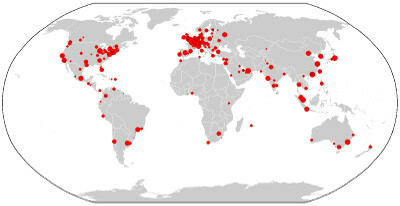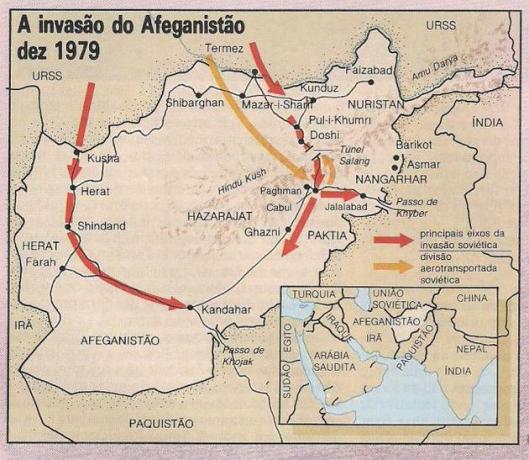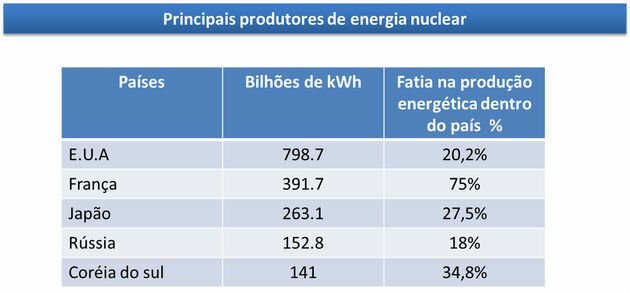THE urban hierarchy it is the form of organization of cities, in which they are structured according to an economic system that determines that smaller ones tend to depend on or suffer a high influence from larger cities. Thus, we can say that the world urban space is structured according to a network, in which the large international agglomerates polarize the smaller centers.
It is important to consider that this hierarchical relationship between cities is structured from the formation of a urban network, which is related to the formation and consolidation of the globalization process. Thus, the commercial and economic relations between the different locations are disseminated, thus becoming part of a network transport and communications, increasing interactions and increasing levels of interdependence between different cities.
To better understand how this network structures the urban hierarchy, scholars usually adopt a classification according to the degree of importance and economic dynamics that a city has, as well as its ability to polarize other smaller centers of power. Thus, we have a typology that goes from the
megalopolises even the small towns.global cities: are the main power centers in the world. In them, the entire world economic structure is determined, transforming these large cities into centers for the diffusion of economic, political and even cultural orders. Its importance lies in hosting important institutions, such as stock exchanges and the headquarters of the largest state and private companies in the world.
We can consider as examples of global cities: New York, London (these two are considered the major cities of the first magnitude in the world), Tokyo, Paris, Hong Kong, Dubai, São Paulo and some others. In all, there are about 50 global cities, ranked by a division that segments them into alpha, beta and gamma groups.

Map of global cities in the world
national metropolises: are the metropolitan agglomerations constituted by the main cities of the urban network in a given country after the global cities. Generally, these cities concentrate most of the population, and the main infrastructures are economically more dynamic than their surroundings. These are economically central locations, which influence regional metropolises and medium-sized cities. In Brazil, some examples of national metropolises are Porto Alegre, Curitiba, Salvador, Recife, Belo Horizonte and a few others.

Belo Horizonte, a national metropolis
The dynamics of national metropolises are not always accompanied by the economic structure of their countries. For this reason, city networks are not always fully structured, which is quite common in underdeveloped countries. In Brazil, for historical reasons, urban development was highly concentrated in the Southeast of Brazil, enabling the growth of the cities mentioned above. On the other hand, the country has been registering successive advances in recent years in the sense of bringing about new centralities in order to better substantiate its urban network.
Do not stop now... There's more after the advertising ;)
The same city may eventually accumulate the titles of national metropolis and global city.
regional metropolises: are secondary centers of economic power in the context of a national economy. Generally, it has no representation at the international level and usually only influences cities in regions close to its location. Despite this, they play an important role in the economy, as they help to spread goods, services and other elements coming from the main power poles. In addition, it contributes to directing raw materials and resources towards national and/or global metropolises. Examples of regional metropolises are cities such as Goiânia, Belém, Manaus, Maceió, Campinas, among others.
medium cities: as the name implies, medium-sized urban formations that have a relative economic dynamic, capable of offering services at different levels. considerable. They usually present the highest rates of economic and industrial growth at the national level. In Brazil, these cities usually have more than 200 thousand inhabitants, remembering that satellite cities (those that integrate the surroundings of a city) cannot be part of this classification. Examples of medium-sized cities are: Londrina (PR), Anápolis (GO), Jundiaí (SP) and many others.
Thus, it is important to consider that these cities structure and polarize small towns and even the rural space, which has become increasingly interconnected and dependent on urban space as industrialization and urbanization processes were advancing.
And the megacities? Are they not part of the urban hierarchy?
The megacity concept is demographic. It was created by the UN to designate those cities with a population of more than 10 million inhabitants. It is, therefore, a quantitative concept, while the definitions presented above are qualitative, as they are based on the levels of structuring, dynamics and political-economic importance of the cities.
By Rodolfo Alves Pena
Graduated in Geography



